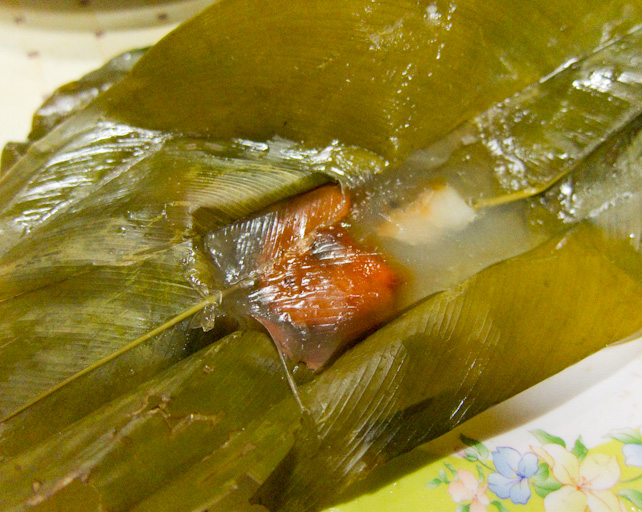B%C3%A1nh b%E1%BB%99t l%E1%BB%8Dc on:
[Wikipedia]
[Google]
[Amazon]
Bánh bột lọc is a small, clear-looking, chewy tapioca dumplings in
bánh bột lọc Huế
' loosely translates to "clear flour cake." In Vietnamese, the word ''


Video showing how ''bánh bột lọc trần'' is made
Video showing how ''bánh bột lọc lá'' is made
{{DEFAULTSORT:Banh bot loc Dumplings Steamed foods Vietnamese pork dishes Vietnamese seafood dishes Bánh Cassava dishes
Vietnamese cuisine
Vietnamese cuisine encompasses the foods and beverages of Vietnam. Meals feature a combination of five fundamental tastes ( vi, ngũ vị, links=no, label=none): sweet, salty, bitter, sour, and spicy. The distinctive nature of each dish refle ...
that can be eaten as appetizers or small snacks. They are usually filled with shrimp and pork belly, often being topped with fried shallots and served with sweet chili fish sauce. It is said to have originated from Huế
Huế () is the capital of Thừa Thiên Huế province in central Vietnam and was the capital of Đàng Trong from 1738 to 1775 and of Vietnam during the Nguyễn dynasty from 1802 to 1945. The city served as the old Imperial City and admi ...
, as the city was once the imperial capital of the Nguyễn dynasty and known for having simple, yet sophisticated dishes.
Etymology
The dish's name is believed to have come from its clear, dumpling-like appearance, as the termbánh bột lọc Huế
' loosely translates to "clear flour cake." In Vietnamese, the word ''
bánh
In Vietnamese, the term ''bánh'' ( or , Chữ Nôm: 餅) translates loosely as "cake" or "bread", but refers to a wide variety of prepared foods that can easily be eaten by hands or chopsticks. With the addition of qualifying adjectives, '' ...
'' can mean "cake" or "bread," but can also be used as a general term for foods that are made from any type of flour, the most common being rice or tapioca. ''Bột'' literally means flour, although it does not specify the type, and ''lọc'' means "refine" or "clarify."
Variation
Bánh bột lọc can either be steamed or boiled and wrapped with or without banana leaf. With the banana leaf wrapping, it is called ''bánh bột lọc lá'', meaning "clear flour cake with leaf." Without the banana leaf wrapping, it is called ''bánh bột lọc trần'', meaning "clear flour cake bare." The filling is traditionally a whole grilled shrimp with the shell on and a slice of pork belly, but variations have had the filling be shrimp without the shell, no pork belly, ground pork, mushrooms, and onions. In addition to tapioca flour, corn starch and rice flour have also been known to be added in the making of the translucent wrapper.
Production
Bánh bột lọc trần is made by adding boiling water into tapioca starch, then mixing and kneading until a smooth, soft, and elastic dough is formed. The dough is then divided into small balls and flattened, where the filling is placed in the middle. The dough gets folded over the filling and the edges pinched together to seal the filling in and creating a dumpling shape. The dumplings are either steamed or cooked in boiling water, then drained and rinsed with cold water. Making bánh bột lọc lá is similar to making bánh bột lọc trần. The dough is placed in blanched banana leaves, some filling is added in the center, and then some more dough is placed on top to cover the filling. The banana leaves are then wrapped tightly and tied together with small strands of banana leaf before being steamed. Regardless of the method, the dish can be frozen for later use.See also
*List of steamed foods
This is a list of steamed foods and dishes that are typically or commonly prepared by the cooking method of steaming.
Steamed foods
* Ada – a food item from Kerala, usually made of rice flour with sweet filling inside.
* Bánh – in Hanoi ...
References
External links
Video showing how ''bánh bột lọc trần'' is made
Video showing how ''bánh bột lọc lá'' is made
{{DEFAULTSORT:Banh bot loc Dumplings Steamed foods Vietnamese pork dishes Vietnamese seafood dishes Bánh Cassava dishes